Trees Birds Mammals Fish Amphibians Reptiles
Wild Algarve
Bookshop
Conocybe pubescens (Gillet) Kühner - Downy Conecap
Phylum: Basidiomycota - Class: Agaricomycetes - Order: Agaricales - Family: Bolbitiaceae
Distribution - Taxonomic History - Etymology - Identification - Culinary Notes - Reference Sources
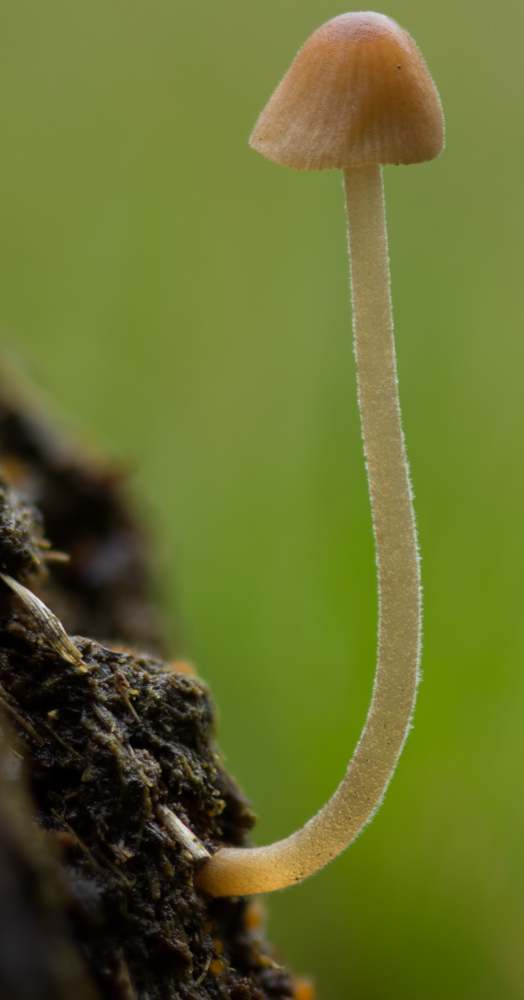
Conecaps are neat little mushrooms, but some species in this group are poisonous and identification to species level nearly always requires study of microscopic characters. For this reason small children should not be allowed to play with or near to Conocybe species.
Conocybe pubescens grows on animal dung, manured soil or occasionally on old damp sawdust or very rotten wood. One of its few distinguishing macroscopic features is the presence of downy hairs on the stems and young caps of these mushrooms. To see these features reasonably clearly you will almost certainly need to use at least a x5 magnifying eyeglass.
Distribution
Conocybe pubescens an uncommon find, but it does occur throughout Britain and Ireland as well as on mainland Europe.
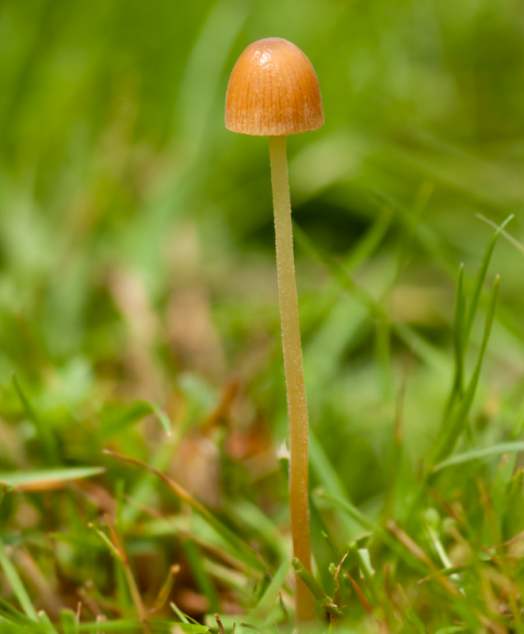
Taxonomic history
This little brown mushroom was described in 1762 by French mycologist Claude-Casimir Gillet (1806 - 1896) who gave it the scientific name Galera pubescens. It was German mycologist Robert Kühner (1903 - 1996) who transferred this species to the genus Conocybe in 1935, thereby establishing its currently-accepted scientific name Conocybe pubescens.
Synonyms of Conocybe pubescens include Conocybe pinetorum, Conocybe pseudopilosella, Conocybe subpubescens, Galera pubescens Gillet, Galera cryptocystis G.F. Atk., and Conocybe cryptocystis (G.F. Atk.) Singer.
Etymology
The generic name Conocybe comes from the Latin Conus meaning a cone, and cybe meaning a head - hence 'with a conical head', or in other words conecap. Less obviously, the specific epithet pubescens is a reference to the fine hair-like structures standing out from the surface of young caps and stems of these mushrooms.
Identification guide
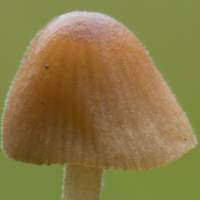 |
Cap
0.7 to 2.5cm in diameter, the caps
are conical, sometimes becoming bell-shaped, and with marginal striations. The surface is finely downy when young, becoming smooth; not greasy;
rusty-brown to orange-brown; hygrophanous, becoming sienna-brown to yellow-brown in dry weather. |
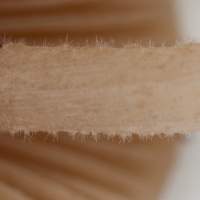 |
Gills
Initially very pale ochre, the crowded
adnexed gills become cinnamon or rust coloured as the spores mature.
Stem
Slender stems of Conocybe pubescens are level, 1 to 2.5mm in diameter and 3 to 9cm long, creamy white to honey-yellow; the base of the stem is often browner and slightly swollen. There is no stem ring.
The stem surface is distinctly downy (see left).
Show larger image
|
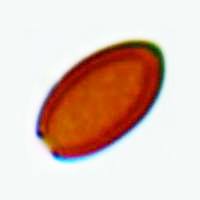 |
Spores
Ellipsoidal, smooth, 12.5-19.5 x 7-11.5μm; thick-walled, with a broad germ pore.
Spore print
Reddish-brown. |
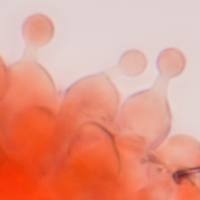 |
Cheilocystidia (gill-edge cystidia)
The cheilocystidia are all lecythiform (shaped like bowling pins).
|
Odour/taste |
Not distinctive. |
Habitat & Ecological role |
Saprobic, appearing on lawns, in parks and on other close-cropped
manured grassland, occasionally on woodchip mulch; also on leaf litter on woodland edges; generally in scattered groups but occasionally solitary. |
Season |
May to September in Britain and Ireland. |
Similar species |
Conocybe apala, the Milky Conecap, is a much paler, more sharply conical mushroom that appears briefly on lawns after rain. |
Culinary Notes
Some Conocybe species are reported to be poisonous. Given its small size and thin flesh, this delicate and very fragile mushroom would hardly be worth gathering even if it were a good edible species, and so Conocybe pubescens should be avoided when gathering fungi to eat..
Reference Sources
Fascinated by Fungi, 2nd Edition, Pat O'Reilly 2016, reprinted by Coch-y-bonddu Books in 2022.
Watling, R. (1982). British Fungus Flora: Agarics and Boleti. Vol 3. Bolbitiaceae: Agrocybe, Bolbitius, & Conocybe. Royal Botanic Garden, Edinburgh, Scotland.
Dictionary of the Fungi; Paul M. Kirk, Paul F. Cannon, David W. Minter and J. A. Stalpers; CABI, 2008
Taxonomic history and synonym information on these pages is drawn from many sources but in particular from the British Mycological Society's GB Checklist of Fungi.
Acknowledgements
This page includes pictures kindly contributed by David Kelly.
Top of page...
Fascinated by Fungi. Back by popular demand, Pat O'Reilly's best-selling 450-page hardback book is available now. The latest second edition was republished with a sparkling new cover design in September 2022 by Coch-y-Bonddu Books. Full details and copies are available from the publisher's online bookshop...